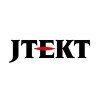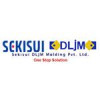Filter interviews by
ISHANYA MOTORS Interview Questions and Answers
ISHANYA MOTORS Interview Experiences
3 interviews found
(1 Question)
- Q1. Programming language
Software Developer Intern Interview Questions asked at other Companies
(2 Questions)
- Q1. Activity about admin
- Ans.
Admin activities involve managing office operations, coordinating schedules, handling correspondence, and ensuring smooth workflow.
Coordinating schedules for meetings and appointments
Managing office supplies and equipment
Handling correspondence and communication with clients and vendors
Ensuring smooth workflow by resolving any administrative issues
Organizing and maintaining office files and records
- Q2. Knowledge of Government compliance
Interview Preparation Tips
Sr. Admin Executive Interview Questions asked at other Companies
(1 Question)
- Q1. Describe the use of GD&T in manufacturing Parts.
Interview Preparation Tips
Top trending discussions






Interview questions from similar companies

Interview Questionnaire
9 Questions
- Q1. Your Dream
- Ans.
My dream is to create innovative software solutions that positively impact people's lives.
Developing cutting-edge technology
Solving complex problems
Improving user experience
Collaborating with talented individuals
Making a difference in society
- Q2. WHy you want to join this orgainsation
- Ans.
I am excited to join this organization because of its reputation for innovation and commitment to employee growth.
I am impressed by the company's track record of developing cutting-edge software solutions.
I am excited about the opportunity to work with a team of talented and motivated engineers.
I appreciate the company's focus on employee development and growth.
I am drawn to the company's culture of innovation and coll...
- Q3. How much can you work with this organisation
- Ans.
I am willing to work full-time with this organization and put in extra hours if required.
I am committed to delivering quality work within deadlines
I am open to working overtime and on weekends if necessary
I am willing to take on additional responsibilities if needed
- Q4. About your family
- Q5. Firstly about yourself
- Q6. Strengths , weakness
- Q7. Basic C questions . Difference between structure and union
- Q8. How can we attach one variable from one file to another
- Ans.
To attach one variable from one file to another, we can use import or require statements in programming languages.
In JavaScript, we can use the 'require' statement to import a variable from another file.
In Python, we can use the 'import' statement to import a variable from another file.
We can also use the 'export' statement in the source file to export the variable and then import it in the destination file.
The syntax ...
- Q9. Where will you think about yourself after 3 years i this organisation
Interview Preparation Tips
Experience: First round of written test is of aptitute and data analysis . questions are easy 30 questions in 40 . Be fast as time is less.
second round of written test consists of all other section each section involves 15 questions .
Questions are easy just go through your syllabus , course books nothing special .
If you are preparing for GATE will be really beneficial .
for C go trough Depth in C . very basic questions asked for it.
for MATLAB learn the basic determinant rules questions involved that . Only basic of MATLAB no image processing or higher level programming ..
Tips: attempt ass many as questions .. Try to attempt all sections . If you are strong in programming make do attempt C and MATLAB portion . as there is post for software department also in organisation . Main department is the core department for that do attempt other portions .
Duration: 120 minutes
Round: Resume Shortlist
Experience: They are not gonna to see your certificates , They are even not much interested in your CGPA .
If your CGPA is low you should have an accurate reason for that if they ask .
Tips: Your Resume should be Short and Compact . Don't make it too large . 1 , 1.5 pages will be enough .
the thing which you want to show to HR majorly in your RESUME should be keep at upper portion , it can be your qualification , your achievements(IIT rank , KVPY etc.) or whatever you feels sholud be on top. you should have deep knowledge about your projects and internship . Each and every thing thing written in your RESUME should be clear to you and able to explain to them .
Round: Group Discussion
Experience: Easy not much stress .
Tips: Be confident . try to give your different point of view of a particiular thing . don't stop suddenly while saying anything .
Duration: 120 minutes
Round: Problem Statement
Experience: not a easy question as i am not able to give accurate answer.
HR will give some time to solve the problem .
Tips: Try to give answer. even if you don't know try to give different explanation for it . give 3-4 different explanations. always trying to solve the question .
Round: HR Interview
Experience: little bit tough . Your anwer should be different . it should not be copied from somewhere .
depends on how you know yourself.
Tips: Have smile on your face . Give all answer with smile . don't hesitate . Give each and every answer .
be fluent . let the HR complete the question and then answer.
Round: Technical Interview
Tips: go through depth in C . knows the basic concept of each chapter . give complete explanation . be accurate .
General Tips: Be confident and smile on your face .
Skills: C , EDC, MATLAB, Control system
College Name: NIT BHOPAL
Motivation: good work culture . easy job . not much work stress . nice wore location .
good seniors review . Also have chance to go abroad in early days .
Funny Moments: HR had taken about 90% interview while thing me as other student , as he didn't took my RESUME . by in the last he told the wrong name . I made correction to him by saying that sorry sir it's my mistake that i haven't give you my RESUME . but actually he hasn't took my RESUME . means i admire my mistake infact its his mistake .


(5 Questions)
- Q1. Embedded C questions
- Q2. Watchdog Timer, I2C, SPI, UART
- Q3. Design State Machine
- Q4. Mix Sound Driver
- Q5. Renesas related
Interview Preparation Tips

I applied via Recruitment Consulltant and was interviewed in Mar 2024. There were 3 interview rounds.
(3 Questions)
- Q1. Bootloader related UDS services
- Q2. HSM and flash driver
- Q3. Startup code sequence
- Ans.
Startup code sequence refers to the order in which code is executed when a program is launched.
Startup code sequence typically involves initializing variables, setting up memory, and executing any necessary setup functions.
Examples of startup code sequence include setting up hardware registers in embedded systems, initializing global variables in C programs, and loading configuration files in web applications.
(3 Questions)
- Q1. Are you ready to work on weekends
- Ans.
Yes, I am willing to work on weekends if necessary to meet project deadlines or address urgent issues.
I understand that sometimes working on weekends may be required in order to meet project deadlines or address urgent issues.
I am committed to delivering high-quality work and am willing to put in extra hours when needed.
I am flexible with my schedule and can adjust my plans to accommodate weekend work if necessary.
- Q2. How will you manage conflicts within the team
- Ans.
I will address conflicts by promoting open communication, active listening, and facilitating constructive discussions.
Encourage open communication among team members to address conflicts early on
Practice active listening to understand all perspectives involved
Facilitate constructive discussions to find mutually beneficial solutions
Establish clear team norms and guidelines for conflict resolution
Seek input from team mem...
- Q3. Why are you switching jobs
- Ans.
Seeking new challenges and opportunities for growth in a more innovative and dynamic environment.
Looking for new challenges and opportunities for growth
Interested in working in a more innovative and dynamic environment
Seeking career advancement and professional development
(2 Questions)
- Q1. Salary negotiation and Notice period
- Q2. Why are you switching
- Ans.
Seeking new challenges and opportunities for growth in a different environment.
Looking for new challenges and opportunities for growth
Interested in working with different technologies or industries
Seeking a better work-life balance or company culture
Wanting to expand skill set or take on more responsibilities
Relocation to a new area

Assistant Manager Interview Questions & Answers
Interface Microsystemsposted on 19 Dec 2022
I applied via Company Website and was interviewed in Nov 2022. There were 2 interview rounds.

(2 Questions)
- Q1. Why are you join this company
- Ans. I am join this it my passion for engineering
- Q2. Can be trained condicates your company
- Ans. Just 1 months training that in your company are decide you will be haired
Interview Preparation Tips
- Recruitment
It's in investing in four years in college

Software Engineer Interview Questions & Answers
Interface Microsystemsposted on 31 Oct 2023

Based on below points-
1. Embedded Basics and Protocol- SPI, UART, CAN
2. C Programming
3. Projects

Software Engineer Interview Questions & Answers
Interface Microsystemsposted on 14 Dec 2024
I applied via Recruitment Consulltant and was interviewed before Dec 2023. There was 1 interview round.
(2 Questions)
- Q1. Give a reference of employee who is working in interface Microsystems
- Q2. Why you want to join this organisation
Interview Preparation Tips
- Worst
- Only reference work
- Salary less
- Toxic

Associate Software Engineer Interview Questions & Answers
Naaptol Online Shoppingposted on 20 Aug 2024
I applied via Company Website and was interviewed before Aug 2023. There were 4 interview rounds.
Simple java questions including theory and code snippet
(2 Questions)
- Q1. Iterate collection and do some options on some perticular elements?
- Q2. Palandrone string Or pattern program Or string related program?
(2 Questions)
- Q1. Linux commands operating system?
- Ans.
Linux commands are used to interact with the operating system through the command line interface.
Linux commands are case-sensitive
Commands are typically followed by options and arguments
Common commands include ls (list files), cd (change directory), mkdir (make directory)
Commands can be combined using pipes (|) and redirection symbols (> and <)
- Q2. Html css javascript theory questions
(2 Questions)
- Q1. Salary discuss and general questions?
- Q2. They ask for join immediately?
Interview Preparation Tips
Skills evaluated in this interview
ISHANYA MOTORS Interview FAQs
Tell us how to improve this page.
Interview Questions for Popular Designations
- Senior Executive Interview Questions
- Team Lead Interview Questions
- Business Analyst Interview Questions
- Sales Executive Interview Questions
- Senior Engineer Interview Questions
- Graduate Engineer Trainee (Get) Interview Questions
- Associate Software Engineer Interview Questions
- Test Engineer Interview Questions
- Show more
ISHANYA MOTORS Interview Process
based on 2 interviews
Interview experience
Interview Questions from Similar Companies
ISHANYA MOTORS Reviews and Ratings
based on 9 reviews
Rating in categories
|
Sales Executive
4
salaries
| ₹2 L/yr - ₹2.4 L/yr |
|
IT Manager
4
salaries
| ₹1.5 L/yr - ₹4 L/yr |
|
Sales Team Leader
4
salaries
| ₹4 L/yr - ₹5 L/yr |
|
Assistant Manager
3
salaries
| ₹3.5 L/yr - ₹16 L/yr |
|
Design Engineer
3
salaries
| ₹3.6 L/yr - ₹4.2 L/yr |

Marelli

Seoyon E-hwa Automotive

Jtekt Sona Automotive India

Sundaram Motors
- Home >
- Interviews >
- ISHANYA MOTORS Interview Questions










